READER: GLIA
31.07. / 01.08.2025
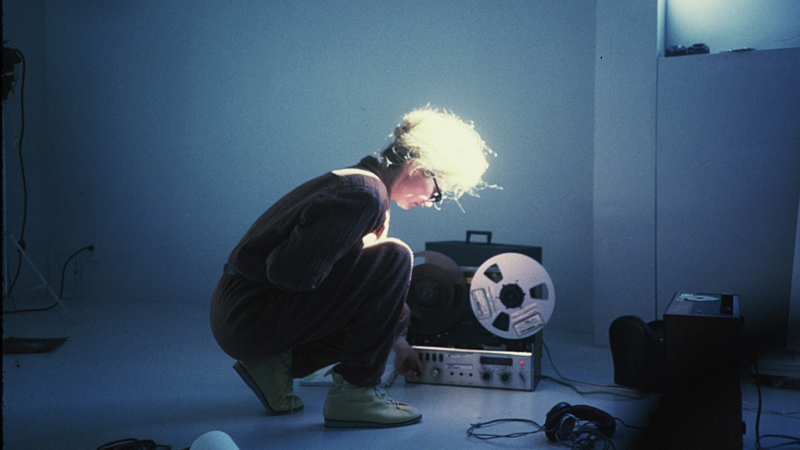
Maryanne Amacher: GLIA (2005)
Interpretive Restaging by Ensemble Contrechamps, members of Ensemble Zwischentöne and Bill Dietz
Susanne Peters (Flute)
Dorothee Sporbeck (Flute)
Maximilian Haft (Violin)
Akiko Ahrendt (Violin)
Lucy Railton (Violoncello)
Volker Schindel (Accordion)
Helles Weber (Accordion)
Bill Dietz (Musical Direction)
Carsten Seiffarth (Curator)
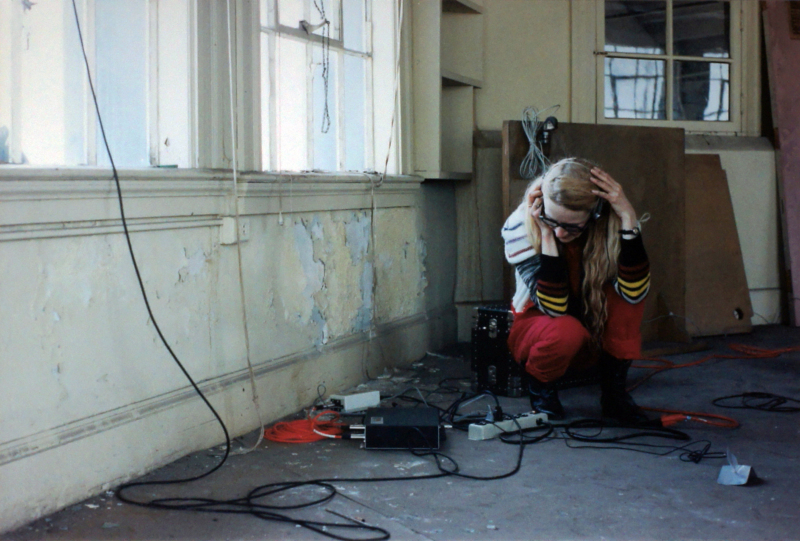
Bill Dietz in conversation with Karl LudwigIt's about a triangular relationship. There always were these three components on her mind: the live acoustic instruments, which are not amplified, the pre-made audio that is played through a set of loudspeakers that need to be diffused in a particular way, and then the listeners. She was always thinking on how these three components lean on each other and reinforce each other. And there is almost a pedagogical structure there, because she is interested in all the different ways that sound touches the body and triggers different things in the body, including auto-acoustic emissions. For instance, in some parts there are evoked what she would call “ear tones”, sounds that are being emitted by your ears in response to the content from the outside. It is a kind of distortion product of the ear and brain, that try to resolve things. In those moments, some of the musicians playing are doubling the sounds that are coming out of your ear, to underline this phenomenon that's happening, to draw your attention even closer to it and to guide your listening toward different possible kinds of listening.

The posthumous presentation of a more or less fixed-form electroacoustic composition by Maryanne Amacher goes fundamentally against the ethos she dedicated much of her life and work to rigorously articulating. GLIA, precisely such an example of fixed-form electroacoustic composition, was from its very inception an exception in Amacher’s oeuvre. In 2005, Maryanne Amacher created a new work for the Berlin‐based Ensemble Zwischentöne. Conceived for seven or eight instruments and electronics, GLIA (named after the brain cells which assist in neurotransmission between synapses) was performed a single time at the Berlin media-art center TESLA, directed and overseen by Amacher herself. With GLIA, Amacher imagined the listener as a sort of “glial” interface between the electronic and acoustic instrumental elements of the work. More specifically, she imagined the otoacoustic emissions created in the ears of the listener (“ghost written” by airborne tones emitted by both the electronics and instruments) as this “neural interface”.
Maryanne Amacher, “CONCEPT SUMMARY – THE LEVI-MONTALCINI VARIATIONS for the Kronos String Quartet”, 1992By isolating and enhancing specific frequency characteristics in the music the quartet plays, the Recorded Sound REINFORCES INTERAURAL PROCESSING, magnifying the listener's tonal responses and sonic imaging – in effect, making them available for observation. We “listen” to what our auditory system perceives as it responds to the acoustic tone. […] With such reinforcements we hear the “virtual sound world” of the composition as a distinct SONIC DIMENSION IN THE MUSIC. Yet more involving is the RECOGNITION that this “virtual sound world” is “the listener's music” – a vital part of the musical experience, but subliminally repressed and unrecognized for many, many years. Now we hear it. The release of this music is very exciting to me!
In the mid-nineties Amacher was deeply engaged in something she called THE LEVI-MONTALCINI VARIATIONS, a work commissioned by the Kronos Quartet for acoustic string instruments and electronics. Because by that point Amacher had systematically refused recital formats and classically oriented concert work for approximately 25 years, her agreement to return to these media required a fundamental reconception of what electroacoustic music could be. In addition to a spectacular “concept summary” in which she precisely outlines her vision, she seems to have gotten quite far in the production of the work’s electronic and notated instrumental components, but for unknown reasons, it was never performed. Years later, when Peter Ablinger invited Amacher to create a new work for Zwischentöne, she made no direct reference to THE LEVI-MONTALCINI VARIATIONS. We only learned after her passing in 2009 that many of the work’s components were directly drawn from the string quartet, and that conceptually, GLIA is a model of “endotonality” as outlined in her “concept summary”. It is doubtful that Amacher would have “repeated” GLIA in the way that we have been presenting it since 2012. But because GLIA itself was created as a sort of simulation or model of what THE LEVI-MONTALCINI VARIATIONS could have been, we offer our performance tonight as a kind of model of a model – or, as Amacher herself might have put it, as a “hearing as if”.
Maryanne Amacher, “CONCEPT SUMMARY – THE LEVI-MONTALCINI VARIATIONS for the Kronos String Quartet”, 1992[A]s the Audience actively participates in producing this dynamic sonic-perceptual dimension of the music (which THEY HEAR AND FULLY EXPERIENCE ALONG WITH THE MUSIC PLAYED BY THE QUARTET), they discover themselves AN INSTRUMENT JOINING THE QUARTET IN A REALIZATION OF THE COMPOSITION. They are together creating the play of aural and interaural sonic imaging in the music. In this new relationship – an entire audience in the concert hall, or a single individual at home – now JOINS THE QUARTET BY PRODUCING SOUND. THE AUDIENCE – AN INSTRUMENT (in the hall, at home in the room) JOINS THE STRING QUARTET (on stage, on CD).
Bill Dietz
Bill Dietz in conversation with Karl LudwigI remember her saying, that what we needed is “more virtual reality”. I think that she searched for a very different understanding of the virtual, the real, the perceptual. For instance, in the transmission works of the 1970s, the "City Links" series, which are telematic installations and performances that bring sounds from far away in one place, she always said that she was not interested in the charismatic content of the sound, in the sound of birds or whatever was being transmitted. Rather she was interested in the construction of presence, trying to understand in a perceptual way, how a sense of place is made in the mind, in the body, in relation to things.
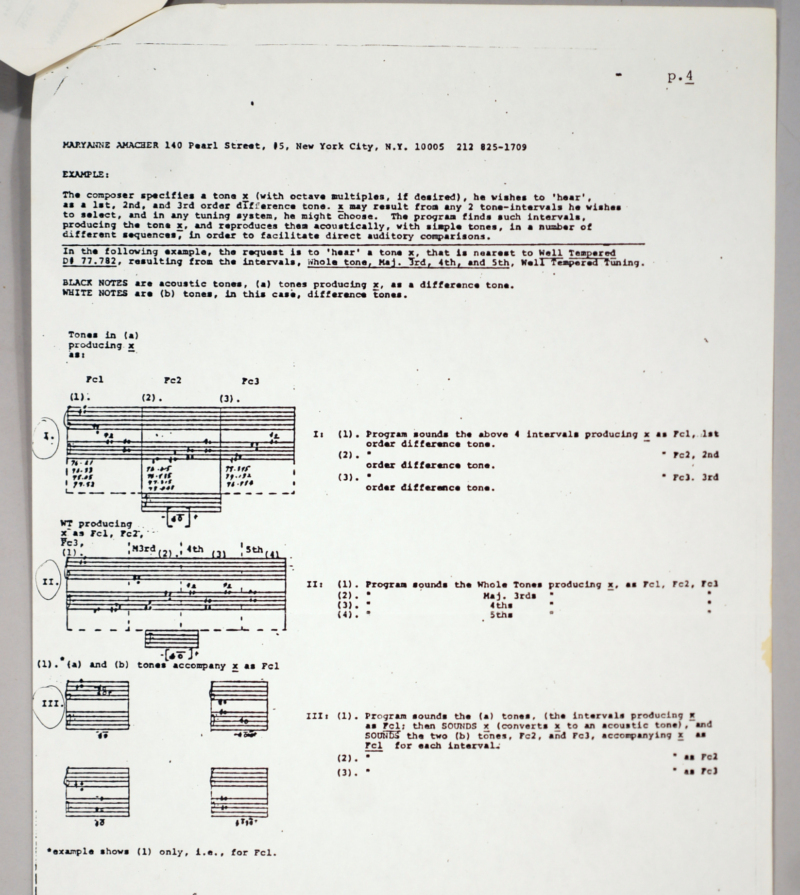

Bill Dietz in conversation with Karl LudwigIt's about finding a particular balance between indirect and direct sound, so that by using reflections in the room it becomes hard to locate where the sound is coming from. Maryanne Amacher hated loudspeakers, even though she used them all the time. She hated the idea that you just point A beaming to point B. Rather she was trying to articulate more complex relations between electronic sound and space. And she tried to do so in a very perceptual way. It's not at all about panning or multi-track things. Actually, unlike a lot of other spatial music, it's just a stereo signal that is being mapped through these eight speakers. It becomes very much about the phase relationships between the different channels and how those are reflected in the room.
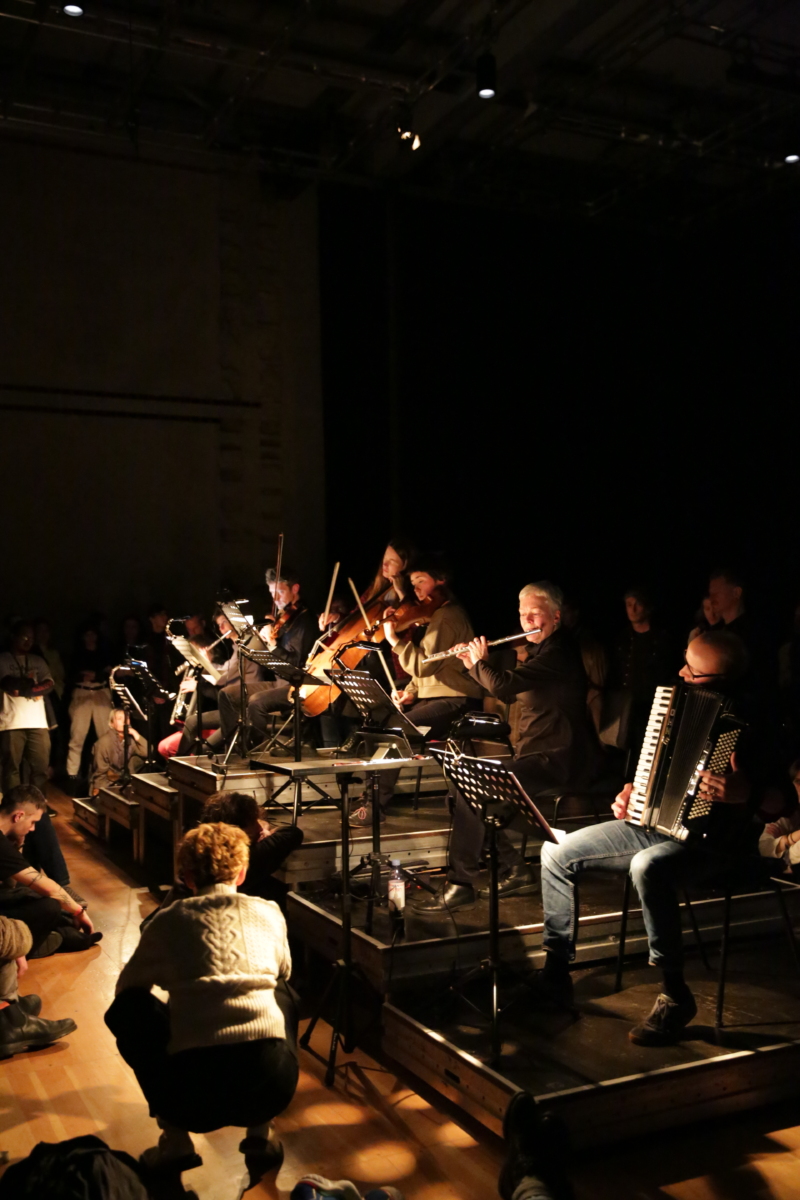
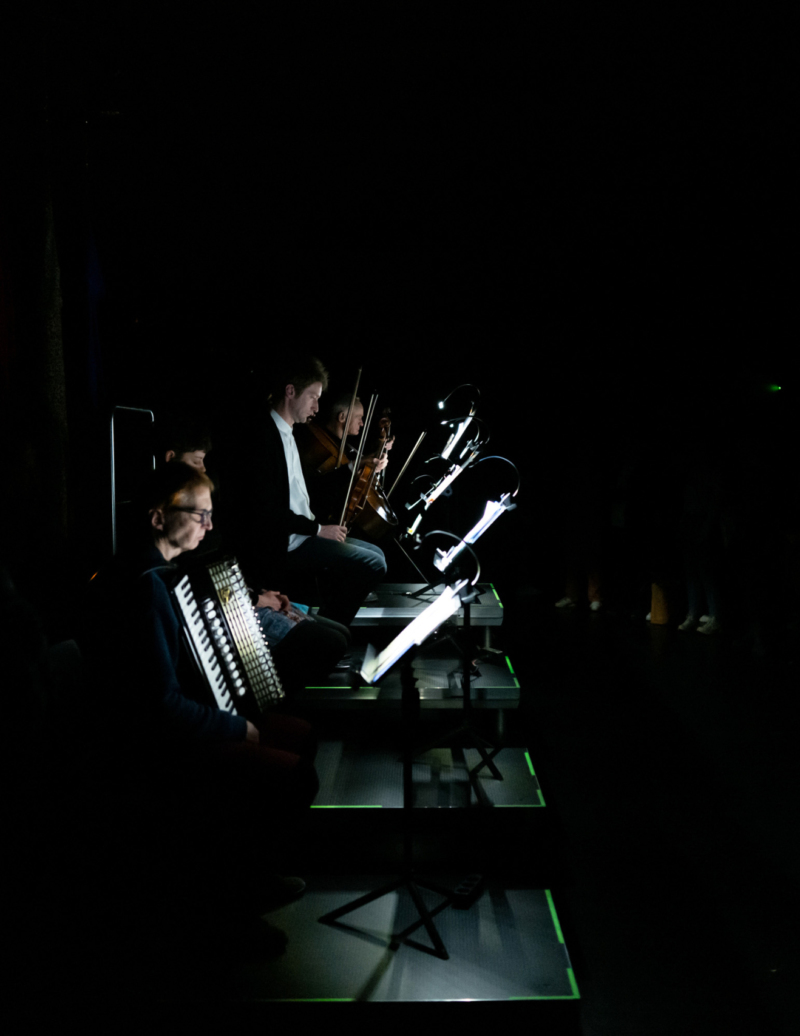
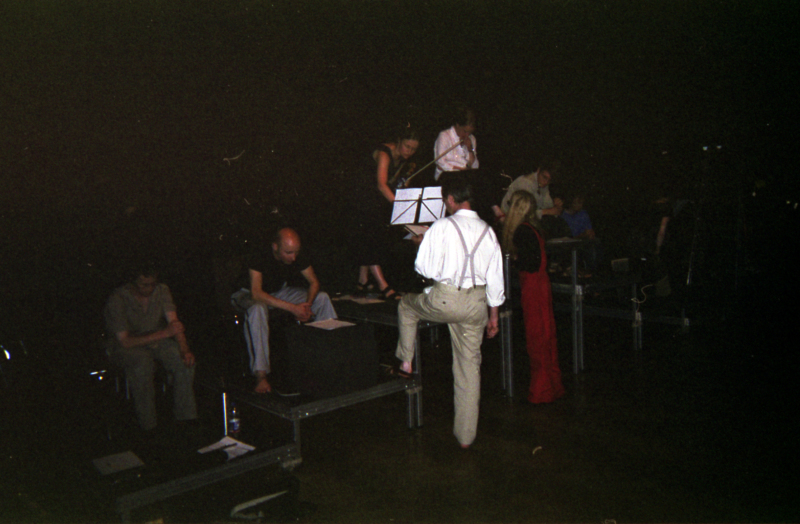
Bill Dietz in conversation with Karl LudwigI think there is a latent or implicit political aspect in her work, which takes a position against a normative distribution of the sensible. She would claim that the everyday experience is suffused with these incredibly sensitive perceptions. But culturally, historically we were not taught to articulate these kind of perceptual spaces. We think they don't exist because we don't have language for them. That's this idea of the work as a kind of pedagogy of sensation. In this triangular structure the things are illuminating ultimately what is happening in us already. She's not creating this, she's not being a modernist composer saying, “I'm inventing this.” She's actually saying “If you listen differently or listen more, this is already happening in your body. You're doing this, and it's happening at all times.” – which is physiologically true. These kinds of auto-acoustic emissions are happening also when you listen to a Beethoven symphony, just very quietly and everything in the room is oriented to suppress things like that. There is a clear paradigm of representation where you're meant to be follow the semantical content of music. But it's triggering all these physiological things as well.

